#Bank Notes of Queen Victoria
Explore tagged Tumblr posts
Text

#bank notes of british india period#bank notes of burma#Bank Notes of King George#Bank Notes of Queen Victoria#bank notes specimen#british india banknotes
0 notes
Text

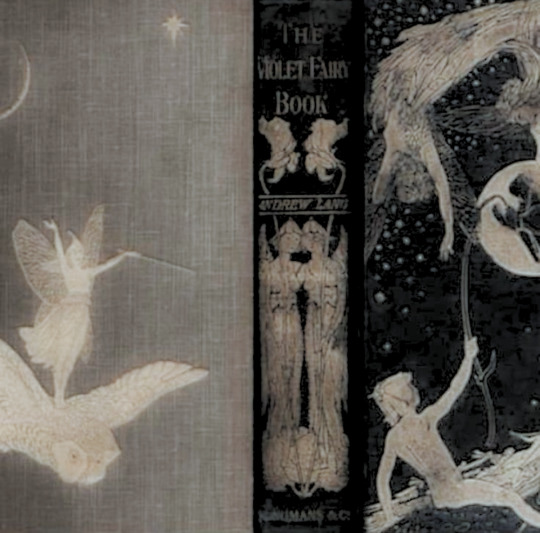

★ Requests: CLOSED ★ You can find my ask box HERE. :)

Rules
★ Be kind <3 ★ All of my works contain strong language! ★ Please be specific with your requests! ★ Please do not send in requests when my reqs are closed! ★ I will always write for gn!reader unless specified otherwise! ★ I will decline any request that I do not feel comfortable writing, and I do not owe an explanation. Please respect that. ★ I do write self harm/suicide/depressed and any bpd tropes for reader (i have bpd!), I find comfort and safety in these types of fics. If you have anyone specific you'd like to request, please feel free to. And remember that my DMs are always open <3 ★ I cannot control what you do, but you have been warned that this is a space including NSFW content and not a safe space for minors. What you do with that is up to you and is no longer my responsibility from this point forward. Read with caution!!! ★ TO BE CLEAR: Very few of my works are not suggestive or NSFW. Those few works are fine, and requesting SFW is fine!!! My regular posts (aka. anything that is not my writing) is completely fine to interact with. Just be cautious!!

I will write for:
★ x reader and x character ★ mature / sensitive themes ★ smut for fictional characters ★ mild kinks ★ fluffy smut ★ angsty smut under most circumstances ★ spitting, bondage, overstim, toys, brat, etc.
I will NOT write for:
★ smut for real people ★ intense kinks ★ mommy/daddy kinks ★ stepbro/stepsis ★ p//dofilia, r//pe, yandere, stalking, age play, etc. ★ suicide/self harm/depression for real people (reader is fine)
Note: I am most comfortable and best at writing fluff, and (for smut) sub!reader. I also don't think I'm the best at writing smut, so do with that what you will lol.

Fandoms I write for:
Books:
★ red queen by victoria aveyard
Movies:
★ scream, harry potter, the hunger games
People:
★ joshua bassett, sam & colby, jake webber, johnnie guilber, sturniolos triplets, smosh, matt cornett, matthew gray gubler
Series:
★ hsmtmts, criminal minds, agents of shield, stranger things, teen wolf, outer banks, the bear, interview with the vampire, walker (2021-2024) // (i will also write for jujutsu kaisen, but i have not read the manga yet, so please no spoilers and only request for the show!!)
(you can still ask for more though!)


divider credits: @saradika @strangergraphics @anitalenia
#★ TAGS ᵔᴗᵔ#rules#requests#rules & requests#fanfiction#fic#writer#hsmtmts#high school musical the musical the series#criminal minds#agents of shield#stranger things#the bear#interview with the vampire#walker#jujutsu kaisen#red queen#red queen by victoria aveyard#joshua bassett#sam golbach#colby brock#sam & colby#sturniolos triplets#smosh fanfic#matt cornett#matthew gray gubler#jake webber#johnnie guilbert#teen wolf
4 notes
·
View notes
Text
Locations for anything
~Locations~
Abandoned Location
Agencies
Air Balloon Park
Airport
Animal Shelter
Animation Studio
Apartment
Aquarium
Arcade
Art Studio
Bakery
Ballroom
Bank
Bar/Pub
Barn
Barnes and Noble
B&B Castle/Cabin
Beach/Beach House
Books-a-million
Bowling Alley
Cabin in the Woods
Castle
Campgrounds
Caves
Cemeteries
Church (don't have to be religious)
Clinic
Club
Community Center
Conventions
Courthouse
Daycare/Preschool
Dealership
Disney World/Land
Drug Den
Enchanted Forest
Factory
Fae Realm
Farmhouse
Festivals
Firestation
Floating Islands
Forest
Freddy Fazbears Pizza Place
Gas Station
Glass Artist Workshop
Graveyard/Crypts
Gym
Hair/Nail Salon
Haunted House
Hiking Trails
Homeless Shelter
Hospital
Hotel
Hot Springs
Job Finder Depot
Kingdom
Lake
Library
Lighthouse
Live Theater
Lotus Fields
Love Hotel
Maid cafe
Mansion
Marketplace (+Blackmarket)
Morgue
Motel
Mountain
Movie Theater
Museum
Neighborhood
Observatory
Orchards
Orphanage
Park
Police Station
Ports
Post Office
Prison
Radio/Tv Studio
Ranch/Farm
Red Light District
Restaurant
River
School/Collage Grounds
Secret Location
Shelters
Skating rink
Snowy Mountain Ski Lodge/Resort
Spa
Space
Space Station
Temple
Train Rides
Trailer Park
Tribe
Vet
Yat
Yoga Studio
Zoo
~Shops~
Adult Store
Animatronic Shop
Antique Shop
Baby Store
Bakery Shop
Barber Shop
Bike Shop
Boba Shop
Book Shop
Bridal Shop
Butcher Shop
Candy Shop
Casket Store
Clothing Shop
Cobbler Shop
Coffee Shop
Comic Shop
Corner Store
Cosmetic Store
Costume Shop
Crafting Shop
Donut Shop
Electronic Store
Fabric Store
Flower Shop
Furniture Store
Gamestop
Grocery Store
Gypsy Market
Hardware Store
Hatter Shop
Hottopic
Ice Cream Shop
IKEA
Instrument Shop
Jewelry Shop
Leather Shop
Magic Shop
Pawn Shop
Pet Shop
Photography Shop
Pizza Shop
Potion Shop
Ramen Shop
Record/Vinyl Shop
Sandwich Shop
Spirituality Store
TailorShop
Tattoo Shop
Tea Shop
Thrift Store
Toy Shop
Wand Shop
Weapons/Firearms Shop
Woodcarver Shop
X Rated Shop
~In a Mall~
Bath and Bodyworks
Bridal Shop
Build-a-bear
Claire’s
Discovery Planet/Channel Store
Food Court
FYE
Gamestop
H&M
HotTopic
Spencer’s
Victoria Secret
Waldenbooks
~Fast Food Places~
Arby’s
Burger King
Dairy Queen
KFC
Smoothie King
Starbucks
Popeyes
Waffle House
~Realms/Worlds~
Dream Realm
Fae Realm
Mirror World
Over Realm
Shadow Realm
Underworld
Aether World
Nether World
Note: I'd be happy to add more over time, if there's any places that would be valuable to add comment it and I’ll add it ^^
#Locations#writers#roleplay#character sheet#fanfic writing#discord rp#writer inspiration#writing prompt#story ideas#character bio#anime oc#fandom stuff#fandom#artists on tumblr#writers on tumblr#my writing#alternate universe#ship art
13 notes
·
View notes
Text

Clarice Beckett (Australian painter) 1887 - 1935
Bowl of Calendula, s.d.
oil on composition board
Clarice Majoribanks Beckett was an Australian Tonalist painter whose works are featured in the collections of the National Gallery of Australia, National Gallery of Victoria and the Art Gallery of South Australia.
Beckett was born in Casterton, Victoria, the daughter of Joseph Clifden Beckett (ca. 1852-1936), a bank manager, and his wife Elizabeth Kate, née Brown (ca. 1855-1934). Her grandfather was John Brown, a Scottish master builder who had designed and built Como House and its gardens in South Yarra, Victoria.
Clarice was a boarder at Queen's College, Ballarat until 1903, before spending a year at Melbourne Church of England Girls' Grammar School. She showed artistic ability, and after leaving school took private lessons in charcoal drawing at Ballarat. In 1914 she went to Melbourne's National Gallery School, completing three years of study under Frederick McCubbin before continuing her studies under Max Meldrum, whose controversial theories became a pivotal factor in her own art practice.
In 1919 her parents moved from Bendigo to the Melbourne bayside suburb of Beaumaris and, with their health failing, Beckett assumed household responsibilities that virtually dictated the structure of the rest of her life, severely limiting her artistic endeavour. Beckett could only go out during the dawn and dusk to paint as most of her day was spent caring for them.
Beckett is recognised as one of Australia's most important modernist artists. Despite a talent for portraiture and a keen public appreciation for her still lifes, Beckett preferred the solo, outdoor process of painting landscapes. She relentlessly painted sea and beachscapes, rural and suburban scenes, often enveloped in the atmospheric effects of early mornings or evening. Her subjects were often drawn from the Beaumaris area, where she lived for the latter part of her life. She was one of the first of her group to use a painting trolley, or mobile easel to make it easier to paint outdoors in different locations.
Max Meldrum once stated, "There would never be a great woman artist and there never had been. Woman had not the capacity to be alone". It is believed this reflects the overall opinion of the period; Beckett was continually put down by the critics and sold little in her lifetime.
While painting the wild sea off Beaumaris during a big storm in 1935, Beckett developed pneumonia and died four days later in a hospital at Sandringham. She was buried in the Cheltenham Memorial Park (Wangara Road) not far from another noted female artist, Mary Vale. She was only 48 when she died, the year after her mother's death.
1 note
·
View note
Text
British India Currency Bank Notes

British Indian Currency Bank Notes refer to the historical currency Notes that were used in India during British colonial rule. These Notes were issued by the British East India Company and later by the British Raj, which was the British administration in India from 1858 to 1947. In British and Indian culture or history, there isn't a specific Currency Noted that fits the description. There have been various Notes issued by the British government or the Royal Mint that Commemorate India or its historical figures.
We have a wide range Collections of British Indian Currency Bank Notes like 1 Rupee, Ten Rupees, George-VI Rare 100RS Note, 10 Rupees Bank Note, King George V, 5 Rupees Bank Note, King George V, 2 Rupees Bank Note, Queen Elizabeth Notes, Queen Victoria Currency Note, Fancy British India Currency Notes, Rare British India Currency Notes and Many more Collections of British India Currency Notes.
Are you interested to Purchase British India Currency Notes, we are deeply welcoming you to India's Premium & trusted online platform to Buy and Sell Old Coins, Banknotes, Stamps, Medals, and many more collectibles.
Visit our website: www.novelemporium.com Call Us: 78294 10063 / 88670 29800
0 notes
Text
There's an interesting discussion happening in the notes about exactly what £4 was worth, so I thought I might say a bit more about historical currency conversion, which I find weirdly interesting.
My starting point is always the Bank of England inflation calculator. If we take 1897 as the date for Dracula, that makes £4 equal to £434 today.
Helpfully for fans of Victorian literature, inflation was pretty much flat from the start of Queen Victoria's reign in 1837 to her death in 1901. Prices fluctuated throughout that period and salaries increased, but £1 in 1837 was worth more-or-less the same as £1 in 1900, which means we don't have to argue too much about whether Dracula was set in 1893 or 1897 or anywhere in between, at least not for currency conversion purposes.
There are limits to the inflation calculation, though. Take Jonathan's £4 stack of clothes. The average adult male wage in the mid-1880s was £56, so Jonathan's clothes are worth 7% of that. The average full-time salary for men in the UK today is £35,256. 7% of that is £2,468 - much more than inflation would suggest, but perhaps a more realistic impression of how much value Dracula is stealing from Jonathan.
I think it can also be useful to compare salaries with their modern-day equivalents. Mina's circa £80 salary (my estimation) is worth £8,687 today per the inflation calculator, but perhaps a better comparison is the £18,000 starting salary of a teaching assistant. Or you could compare Jonathan's circa £150 salary (also my estimation) with the £28,000 starting salary of a newly qualified solicitor.
However, falling inequality means that salary comparisons can give the wrong impression; a solicitor in Victorian times was proportionally much wealthier than the (very poor) average person than a solicitor is today. Mina and Jonathan are poorer than every other main character in Dracula but they are wealthy by the standards of their society overall. So we could treat Mina as earning about £8,687 (inflation calculation), about £18,000 (equivalent job, similar standard of living) or about £42,900 (90th percentile income). It depends on exactly what we're trying to compare.
And this is why I chickened out and just said "hundreds of pounds" in the post above.
The suit in which I had travelled was gone, and also my overcoat and rug; I could find no trace of them anywhere. This looked like some new scheme of villainy...
It's understandably not a priority for Jonathan right now relative to all the other implications of the theft, but a suit in 1888 cost £2 and an overcoat £1 15s. I'd guess the rug (a travelling rug) is cheaper but probably at least 5s. So Dracula has taken clothing worth about £4 from Jonathan, equivalent to hundreds of pounds today.
103 notes
·
View notes
Text
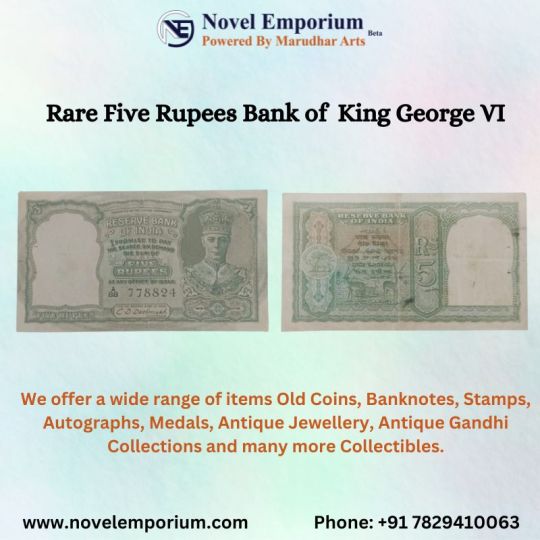
British India banknotes were the official currency used in the territories under British rule in the Indian subcontinent. These banknotes were printed using high-quality materials and advanced printing techniques, making them durable and difficult to Dummy.
In Novel Emporium you can buy genuine Bank Notes of world wide like Bank Notes of King George, Bank Notes of Queen Victoria, Bank Notes of Burma, Bank notes of Republic IndiaVisit Novel Emporium to buy your favourite antique collections online
0 notes
Text
Elizabeth II 45¢ - Sello Canadá año 1995

Elizabeth II 45¢ - Sello Canadá año 1995Todo comienza con tu primer sello 😊 después no puedes parar. Se dice que si algo no está en un sello no existe.La reina Elizabeth II ha tenido una larga y cercana relación con Canadá desde su coronación en 1953. En 1995, la Reina visitó Canadá para celebrar el 50 aniversario de la Victoria en Europa durante la Segunda Guerra Mundial. Durante su visita, la Reina participó en una serie de eventos y ceremonias en todo el país, incluyendo una visita a la ciudad de Ottawa, donde se encontró con el primer ministro de Canadá y asistió a una sesión conjunta del parlamento canadiense. Además, la Reina también asistió a la inauguración del Centro de las Artes de Canadá en Toronto y se reunió con varios líderes indígenas en la provincia de Saskatchewan para discutir temas de interés mutuo. En resumen, la relación de la Reina Elizabeth II con Canadá ha sido duradera y significativa, y su visita en 1995 fue un momento importante en la historia de ambas naciones.Crea tu propio álbum para tus sellos con nuestras hojas imprimibles, descúbrelas en la tienda de sellos. También las puedes pedir impresas por correo. Es como coleccionar cromos o figuritas.Si te ha gustado (o no) por favor deja tu comentario 😊, nos hace mucha ilusión. Reina Elizabeth II Catálogo Sooluciones ID 02241 - Estampilla de Canadá. Sello postal emitido el 31/07/1995.
Sello de Canadá Definitivos 1985 - 2000
Información del sello: Michel: CA 1496Dr. Catálogo Yvert et Tellier: CA 1418a, Código del catálogo Stamp Number CA 1360as. Formato de la pieza Sello. Valor facial del sello 45 ¢ - Centavo Canadiense. Tamaño del sello ancho y alto: 26 x 22 mm. Dentado: 13 x 13 1/2. Papel: Papel Peterborough. Tipo de impresión de la estampilla Litografía offset. Colores: Multicolor. Sellos por pliego: 100 . Serie: Definitivos 1985 - 2000. La temática en la que puede incluirse este sello puede ser Coronas, Diademas, Jefes de Estado, Mujeres, Personajes famosos, Realeza, Reinas, Sellos Canadá 1995. Formato: Sello. Categoría: Definitivo. Impreso por: Canadian Bank Note. Diseño de: Tom Yakobina, Chris Candlish, Yousuf Karsh. Variante: Borde izquierdo sin dentar.. Precios de Venta o Compra de sellos aproximado vistos en internet: Precio mínimo estimado: 0,02 € (euros) Precio máximo estimado: 0,75 € (euros) Datos actualizados abril, 2023 Elizabeth II 45¢ - Sello Canadá año 1995 ¿Tienes alguna información de esta estampilla?, ¿Conoces su valor actual?, ¿Puedes aportar una historia? deja un comentario para compartir con todos. Si lo tienes disponible, lo buscas, lo vendes, intercambias o quieres conocer algún dato, también puedes dejar un comentario. Complementaremos la ficha con tus aportes. Referencias: 02241 - Colnect: Catálogo de sellos : Sello › Queen Elizabeth II Read the full article
0 notes
Text

Tatyu Betul, Empress of Ethiopia from 1889 to 1913.
More than simply the wife of Emperor Menelik II, she was a key advisor who played an active role in national affairs and led troops into battle in defence of Ethiopia's independence. She founded churches, nunneries, hotels and banks and promoted secular education. Menelik was her 6th husband; after he suffered a stroke in 1909 she became de facto head of state until a plot to push her aside by other political players succeeded. Compared to more famous contemporary female rulers, e.g. Britain's Queen-Empress Victoria, Tatyu wielded an extraordinary degree of political agency and she paved the way for female rule in Ethiopia: Menelik's daughter or grand-daughter Zewditu became empress in her own right, albeit with future emperor Haile Selassie as regent.
Source: 'A Woman's World 1850 - 1960' by Marina Amaral and Dan Jones (p.164-5).
What is most interesting to me is the connection with the Queen of Sheba who apparently is only briefly mentioned in one passage in the Bible, is unnamed and whose actual existence is disputed by many historians. Haile Selassie, who was crowned Emperor of Ethiopia in 1930 and around whom the Rastafari movement emerged, was said to have descended from the Solomonic dynasty, which according to legend began with King Solomon, the Queen of Sheba and their son Menelik I*.
(*Note the name of Tatyu Betul's husband is Menelik II.)
0 notes
Text
Wright was born in Jamaica, Queens, New York.[1] In the liner notes to his debut album 'Nard, he stated that his mother is Lessie Wright.[2] His��godmother was singer Roberta Flack.[3]
He attended the High School of Performing Arts in New York.[4] His classmates included writer Carl Hancock Rux and gospel recording artist Desiree Coleman Jackson. He was offered a slot touring with Lenny White when he was 13, and he played with Tom Browne at the age of 16.[5]
GRP Records signed him in 1981 and released his debut album 'Nard, tracks from which were prominently sampled in hits by Dr. Dre, Snoop Dogg, Skee-Lo, and LL Cool J.[6] The album was re-released in 2001. He followed with Funky Beat (1983) on Arista and Mr. Wright (1985) on Manhattan Records. The latter of these albums included his biggest R&B appearance, "Who Do You Love", for which a video was made that is featured in the title sequence of Video Music Box. The female vocalist was Marla Adler.[7] In 1990 he released the gospel album Fresh Hymns, followed by Brand New Gospel Format in 1991, and Fresh Hymns II in 1992. He released an album with Sadao Watanabe, titled Go Straight Ahead' N Make a Left, in 1997. In 2000 he formed a trio with Alfredo Elias and Damon Banks and released the album Back to Our Roots.[8]
Wright also appeared on recordings by musicians including Miami Mike Devine Pennington, Doug E. Fresh, Cameo, Bobby Brown, Pieces of a Dream, Charles Earland, Marcus Miller, and Miles Davis. After his recording days, Wright continued playing keyboards in Dallas, where he mentored younger artists.[9]
Bernard Wright died on May 19, 2022, at the age of 58, after being hit by a car while crossing a street in Dallas. He was married to Anita Wright for nearly 40 years and is survived by his children Bernard Jr., Christopher, and Victoria Wright.[10]
youtube
3 notes
·
View notes
Photo
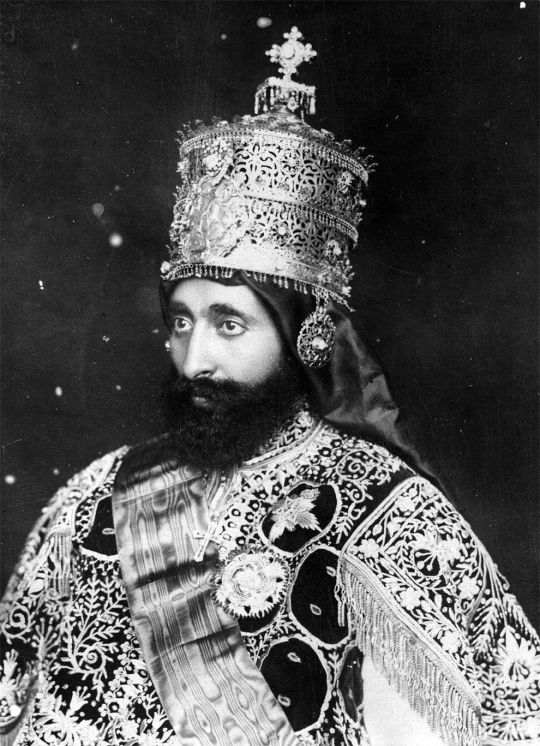
Who was the king of Ethiopia before Haile Selassie?
The title used by Haile Selassie actually translates as 'King of Kings', and thus was usually rendered in English as 'Emperor' rather than 'King'.
The previous monarch before him was a Queen (or Empress) not a King: Zewdita, who ruled from 1917 to 1930. Before her came her nephew Iyasu, who was never actually crowned so is usually not included in the list of emperors. Before him came Emperor Menelik II, who ruled from 1889 until 1913, but his death was not publicly announced until 1916.
In Amharic, the title was Negus Negusti, or in Ge'ez (the traditional language of Ethiopia still used for ritual and sacred purposes) Negusa Negest. 'Negus' is pronounced with the stress on the second syllable, which is long, so something like ne-GOOSE. It is usually translated into English as 'King'. It should also be noted that Ethiopia does not use the Latin alphabet, so Amharic and Ge'ez words are often transliterated into English in different ways (such as negusti, naguste, etc).
For much of its history, Ethiopia was a collection of rival kingdoms such as Shewa, Gojjam, Wollo, and Begemder, whose rulers often used the title Negus or King. Meanwhile the Solomonic dynasty claimed to rule the whole country by the right of their descent from Menelik, the supposed son of Solomon and the Queen of Sheba. Members of the dynasty called themselves Kings of Kings. Sometimes they had real power and the country had a centralised government; at other times there were merely figureheads while the various provincial kings were practically independent.
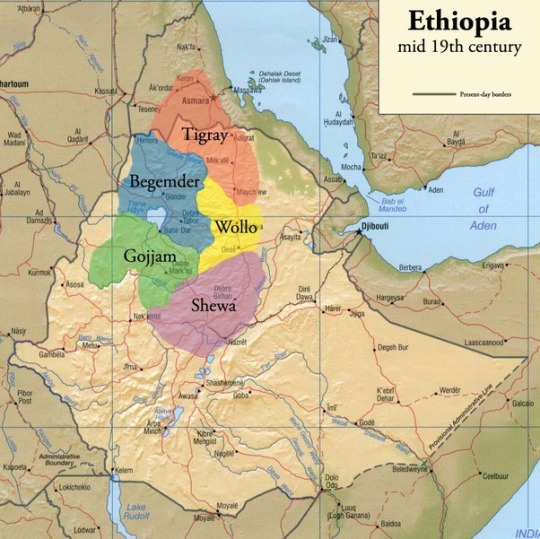
The period from 1769 to 1855 was one of those times of division with no real central government: it is known as the Zemene Mesafint or 'Age of Princes'. No fewer than 23 different Emperors were crowned during this period, but none of them had much actual power. That changed with the rise to power of Kassa Haile, son of a minor nobleman from the Dembiya province. Disinherited and reduced to outlawry — popular legend speaks of him as a Robin Hood-like figure, stealing from the rich and helping the poor — he formed an army and eventually seized control of Dembiya for himself.
Kassa attracted the attention of the powerful noble Ali of Yejju, whose mother Menen had married the nominal emperor and who himself claimed to be the Imperial Regent. In order to make this up-and-coming young warlord an ally, Ali arranged for him to marry his daughter Tewabech in 1848. While Kassa and Tewabech had a happy marriage, he soon quarrelled with his in-laws, and by 1852 was in armed rebellion against them.
Kassa defeated both his father-in-law and several other rival nobles, and by 1855 was the strongest ruler in Ethiopia. He then forced the nominal Emperor Yohannes III to abdicate, and had himself crowned Negus Negusti on 11 February 1855. He changed his name to Tewodros ('Theodore') which sounded more imperial, and spread the story (which may or may not be true) that his mother was descended from a 17th-century Emperor of Ethiopia and thus he himself had the blood of the Solomonic dynasty in his veins.

For the first time in a century Ethiopia was united by an Emperor who had actual power. Tewodros II (there had been a previous Tewodros in the 15th century) ruled for 13 years and spent much of that time leading an army, forcing the semi-independent rulers of Gojjam, Tigray, Shewa, and Wollo to recognise his authority. As well as constant civil wars he was threatened by the expansionist Egyptian khedivate, the Ottoman Empire, and neighbouring Muslim kingdoms.
In 1862 Tewodros decided to ask the British Empire for help modernising his kingdom. However, the British did not want to get involved in the region, and did not take his request seriously. Outraged by this dismissal, Tewodros ordered all the British citizens in his country to be arrested and thrown in prison. When he heard that a Church of England missionary had written a book describing Emperor Tewodros as 'barbaric, cruel, and unstable' he flew into a rage, personally threatened the missionary with a gun, and then beat two of his servants to death with his own hands.
The British response to the imprisonment of their citizens (including their ambassador) has been described as "one of the most expensive affairs of honour in history." They organised an army 13,000 strong, invaded Ethiopia (in January 1868), defeated its army, conquered it, and set the British prisoners free. Then, mission accomplished, they turned around and went back home again, leaving Ethiopia to its own devices. As for Emperor Tewodros, he shot himself when the British soldiers broke through the gates of his fortress.
The death of the Emperor left a power vacuum in Ethiopia, triggering four years of civil war. His immediate successor as Negus Negusti took the throne-name Tekle Giorgis II and attempted to consolidate power by offering concessions to the Ethiopian Church; but few of his rival nobles recognised his claim to the throne. Tekle Giorgis ruled for only three years before being defeated in battle by the warlord of Tigray province, who had him blinded and thrown in prison to die.
The new ruler was Kassa Mercha, another son of a minor noble who had fought his way to control of a province. When the British invaded in 1868 Kassa had helped them pass through his lands in Tigray rather than fighting them, and in return the British gave him enough modern muskets to equip 800 men, plus a battery of artillery. It was with these modern troops, plus around 11,000 more traditionally-equipped warriors, that Kassa defeated the 60,000-strong army of Emperor Tekle Giorgis at the Battle of the Assem on 11 July 1871.
After mopping up several other rivals, Kassa had himself crowned as King of Zion and King of Kings of Ethiopia (Nagusä Sayon, Nəgusä Naguśt zä Ityopya) on 21 January 1872. He took the regnal name Yohannes IV, and ruled for 17 years. He was a strong ruler who continued the work begun by Tewodros II of attempting to unite the rebellious provinces under central control, and also expanding the borders of Ethiopia outwards by conquest. A major blow to his ambitions was when the Italians seized control of the port of Massawa, previously controlled by Egypt, in 1885 — Yohannes had hoped to acquire the city himself.
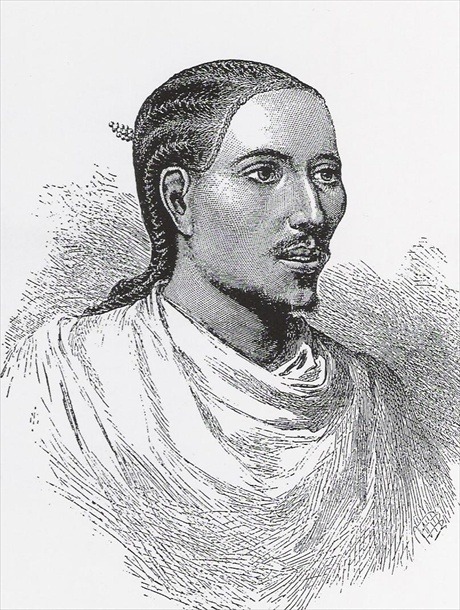
Emperor Yohannes IV was killed in battle in 1889 when the Mahdists of Sudan, who believed their leader was the prophesised Messiah, invaded Ethiopia. As he lay dying in his tent he declared that his nephew Mengesha was actually his son, and so should succeed him to the throne. However, few people believed this claim and even fewer were willing to accept Mengesha as their emperor; so he was never crowned. He did, however, continue to rule his father's lands in Tigray.
The next emperor was instead Sahle Maryam, who took the throne as Menelik II. He was the illegitmate son of the negus of Shewa province, and was taken prisoner when Emperor Tewodros II subdued Shewa and reincorporated it into his empire. However, Tewodros took a liking to Sahle and arranged for him to marry his daughter. In 1865 Sahle seized control of Shewa for himself. He remained neutral during the British invasion of 1868, helping neither his father-in-law the Emperor nor the British. While Yohannes ruled, Sahle remained mostly quiet, though he showed great interest in modernising his province and especially its army with Italian help.
He declared himself as rightful emperor under the new name Menelik as soon as Yohannes died, because unlike the previous few monarchs, he was directly descended in the male line from the House of Solomon. Most nobles accepted his claim and he was crowned on 3 November 1889. He would rule for 24 year

born Sahle Maryam, 1889–1913
Menelik II consolidated power in Ethiopia, establishing a new capital city at Addis Ababa with modern enhancements such as paved roads, plumbing, a bank, and a post office; and in 1894 he invited the French to build a railway to connect the city to the French-controlled port of Djibouti. He also more than doubled the size of Ethiopia, by conquering the tribal lands to the south and east of his empire in a series of brutal wars. However, he is probably most famous for defeating the attempted Italian conquest of Ethiopia in 1895-96.
When he took the throne in 1889 Menelik had signed a treaty with Italy in which he recognised their ownership of Massawa and Eritrea in return for their acknowlegement of his position as Emperor. The treaty also guaranteed the freedom of both countries to trade in each others' territory and enjoy equal rights for their citizens there. However, this agreement, the Treaty of Wuchale, contained a clause that was different in the Italian and Amharic versions. The Amharic text said that the Emperor of Ethiopia could use the services of the Italian government when conducting negotiations with other nations. The Italian text said that the Emperor must use those services.
In other words, the Italian version of the treaty — which the Italian government circulated to other European nations — made Ethiopia their protectorate, conducting its foreign policy only with Italian permission. The Amharic wording suggested that this was merely optional, and that the Ethiopians could simply ask for Italian help and advice when negotiating with Western countries. It is thought that the discrepancy was included, on his own initiative, by the Italian ambassador in Ethiopia, Count Antonelli, who wrote the text of the treaty.
Emperor Menelik did not discover this deception until 1890, when he wrote letters to Queen Victoria of the UK and Kaiser Wilhelm II of Germany, only to have them returned with a note that he was not allowed to do this, and should communicate with them only via Italy in future. (Supposedly Victoria's answer was cool but polite, Wilhelm was rude and dismissive.) Menelik was outraged, but it was not until 1893, when he felt his domestic position was secure, that he denounced the treaty. Italy, in turn, saw this defiance as justification for war.
In December 1894 fighting broke out between Italian forces in Eritrea and the inhabitants of Tigray, ruled by Mengesha, the "son" (or nephew) of Emperor Yohannes whom Menelik had beaten to the throne in 1889. The Italians won a swift victory and captured Adwa, the capital of Tigray. This encouraged them into overconfidence, and they decided to invade and conquer the rest of Ethiopia. This proved a disastrous failure.
On 1 March 1895 an Italian army of 14,519 men attacked an Ethiopian army of about 100,000 men in the Battle of Adwa (or Adowa), and was almost wiped out, losing 7,000 killed, 1,500 wounded and 3,000 captured. News of the defeat caused riots in Italy and the collapse of the government there. The new Italian government quickly signed a treaty under which they recognised Ethiopia's independence after all, and paid an indemnity of 10 million lire, in return for peace (and Ethiopia's recognition of the new border with Eritrea).
Menelik suffered a stroke in 1909, at the age of 65, which left him incapable and paralysed. His (third) wife Taytu, who had a strong personality, effectively ruled the country for a year until she was forced from power and replaced by a Council of Regency which governed from 1910 until Menelik died in 1913.
Menelik had no children from his three marriages, but he did have at least three illegitimate offspring. In 1909 he nominated his 14-year old grandson Kifle Yaqob, son of his eldest illegitimate daughter, as his heir. In 1911, with his grandfather still alive but unable to rule, his teenage grandson took power under the name of Iyasu. His title was Lij, literally meaning 'child [of noble blood]': 'Prince' might be an appropriate English translation in this context. ('Infante' would be even closer if we were speaking Spanish.)
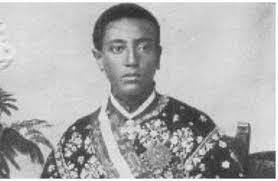
Prince Iyasu, uncrowned ruler of Ethiopia 1911–16
Lij Iyasu faced multiple challenges to his rule, including an attempted coup, a poisoning attempt, and an armed mutiny in his first year in power. He was also accused of neglecting his duties and engaging in scandalous behaviour, including leading his bodyguards in slave-raids against neighbouring states instead of remaining in the capital.
In December 1913 Menelik finally died, though this fact was kept hidden to avoid instability. The nobles and ministers of the court, who regaded Lij Iyasu as an incompetent brat, avoided having him crowned as Emperor. On 27 September 1916 the Minister of War, Habte Giyorgis Dinagde, organised a coup d'état. He produced witnesses claiming that Iyasu had secretly converted to Islam, which would be grounds to forfeit the throne; and under pressure the Church confirmed this claim, excommunicated Iyasu and released the Ethiopian nobles from their oaths of loyalty.
A brief civil war followed, and Iyasu's side lost. He fled into hiding in the desert for five years, being captured in 1921 and kept under house arrest. When Emperor Haile Selassie took the throne in 1930, as described below, Iyasu was treated more harshly. When the Italians invaded again in October 1935 they distributed propaganda urging the Ethiopians to rise up in support of "the true Emperor Iyasu V" to overthrow Haile Selassie. Purely by coincidence, the 40-year old Iyasu was shortly afterwards found dead in his cell; having died entirely of natural causes and certainly not murdered on the Emperor's orders as a potential threat.
Going back to 1916, however, the organisers of the coup decided to make Zewdita the new monarch. She was an illegitimate daughter of Emperor Menelik II, and thus the aunt of Lij Iyasu. She was also the first regnant Empress of Ethiopia, and the first female African monarch in several centuries. Her title, rather than 'King of Kings', was 'Queen of Kings' (Negiste Negest). However, as a woman it was agreed that her relative Tafari Makonnen (who was also her heir since she had no surviving children of her own) would act as her regent and plenipotentiary, the Balemulu 'Inderase. Empress Zewdita was not entirely a figurehead — she had the final decision-making power and a lot of political influence — but her kinsman was the public face of the government.
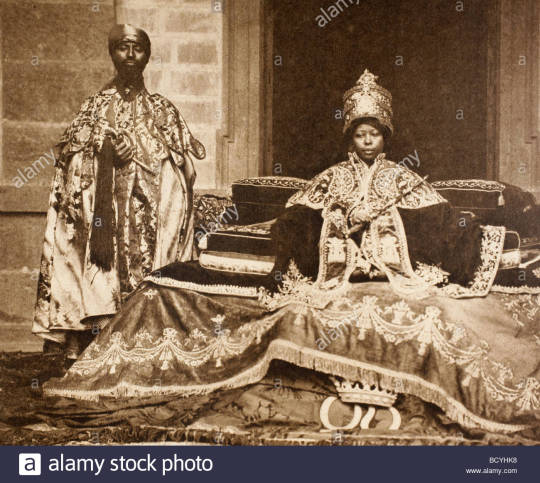
Empress Zewdita, 1917–30
Empress Zewdita was crowned on 11 February 1917 and ruled for 13 years. She was conservative and a traditionalist, and a patron of the Church in Ethiopia. She left most matters of government in the hands of her relative the Regent Plenipotentiary, Tafari Makonnen.
This regent’s father Ras Makonnen ('ras' is a noble title, roughly equivalent to duke) was the first cousin of Emperor Menelik II on his mother's side, and was appointed as governor of Harar by the Emperor. He was also a notable military commander at the Battle of Adwa. Makonnen's son Tafari, born in 1892, thus had royal blood, and it was agreed in 1917 that he would be the nominated successor to the childless Empress Zewdita. He was also given the title ras at this point.
Ras Tafari thus became the face of the Ethiopian government in the name of the Empress. He arranged for his country to join the League of Nations in 1923, and pursued a cautious strategy of modernisation and westernisation. He also banned slavery in his country, though he was unable to enforce this.
In 1928 there was an attempted revolt against Tafari's power, led by the governor of Sidamo province who was accused of underpaying taxes to the central government. Conservative nobles rallied around the Empress and attempted to have Tafari tried, for treason and consorting with Italians. The attempt failed, and as a concession to secure peace Empress Zewdita was pressured into upgrading Tafari's title from Ras to Negus, or 'king'.
Two years later the Empress's husband Gugsa Welle launched a rebellion of his own against Negus Tafari — without the permission of his wife. He raised an army of around 35,000 men, but other members of the nobility were too cautious to join him. The Empress reluctantly declared her husband a rebel, and Tafari led the official army of Ethiopia to combat him at the Battle of Anchem on 31 March 1930. Three aircraft flew over the rebel army dropping leaflets urging the soldiers to desert, followed by bombs. Gugsa Welle himself was shot and killed while riding a white horse into battle. His army disintegrated. Within three days, Empress Zewdita herself was dead, supposedly of shock and grief at her husband's death (though she was in fact seriously ill anyway).
Eight months later on 2 November 1930 Tafari Makonnen was proclaimed as Emperor himself, taking the name Haile Selassie (which means 'Power of the Trinity'). He remained emperor until the revolution of 1974, though between 1936 and 1941 he was in exile in England after the Italian conquest of his country
A major famine in 1972-74 which killed tens of thousands of people (some sources claim even higher figures) undermined public support for the Emperor, who until then had generally been popular. High inflation also led to riots, strikes, and a mutiny by the army which demanded higher pay. On 12 September 1974 a Committee (Derg in Ge'ez) set up to investigate and rectify the army's grievances, instead deposed the Emperor and placed him and his family under arrest.
Haile Selassie's son, the 58-year old Crown Prince Asfaw Wossen, was in Switzerland at the time receiving medical treatment. The military junta announced that he was now King of Ethiopia (they used the term 'King', not 'Emperor'). However, Asfaw refused to accept the legitimacy of the coup against his father, and therefore refused to use the new title given to him. He also publicly condemned the actions of the Derg when they had about 60 high-ranking members of the government executed by firing squad. In March 1975 the Derg — officially known as the Provisional Military Administrative Council — therefore announced the abolition of the monarchy and declared the creation of a Marxist-Leninist socialist republic.
The last reigning emperor, 83-year old Haile Selassie, died on 27 August 1975, supposedly of complications following surgery but according to some, he was strangled.
558 notes
·
View notes
Text
Explore The Rich History And Intricate Of Bank Notes Of India.

India has a long and fascinating history when it comes to its banknotes. The country's currency has evolved over time, reflecting India's cultural, political, and economic changes. Let's take a closer look at the banknotes of India, their history, and their significance.
The first Bank Notes of India were issued by the Bank of Bengal in 1806. These were uniface, and their denominations ranged from 1,000 to 10,000 rupees. These notes were issued to make trade easier, as the British East India Company was expanding its business in India and needed a more efficient way of conducting transactions.
Over the years, the design of India's banknotes has changed to reflect the country's cultural heritage and political landscape. For example, the East India Company 1 rupee note, which was first issued in 1917, featured a portrait of King George V. In 1949, after India became independent, the portrait was replaced with an image of Mahatma Gandhi.
The Reserve Bank of India issued its first banknote series featuring the Ashoka Pillar emblem. This design has remained a constant on India's banknotes ever since.
India's banknotes continued to evolve over the years. In 1996, the Reserve Bank of India introduced a new series of banknotes like Bank notes of Republic India, that were more secure and harder to counterfeit. These notes featured the Mahatma Gandhi series, which included images of Mahatma Gandhi and other important figures in India's history.
In 2016, the Reserve Bank of India announced that it would be introducing a new series of Bank Notes of India, which would include denominations of 2,000, 500, 200, 100, 50, 20, and 10 rupees.
One of the most interesting aspects of India's banknotes is the different languages in which they are printed. India has 22 official languages. Bank notes of world wide reflect this linguistic diversity. The front of each note features a portrait of an important Indian figure, while the reverse side includes images of Indian landmarks, wildlife, and other important cultural icons.
Wind-up of India's Cultural Heritage. Bank Notes of India are not just a means of exchange but also reflect the country's rich cultural heritage and political landscape. From the earliest East India Coins And Notes to the advanced security features of the latest series, Uniface of Bank Note of India have come a long way. They are a symbol of the country's economic growth and cultural identity, and an essential part of India's history and heritage.
#Bank Notes of King George#Bank Notes of Queen Victoria#Bank Notes of British India Period#Bank Notes of Burma#Bank Notes of Republic India#Bank Notes of world wide#George King Banknotes#Bank Notes of India
0 notes
Text
i did nature docus, now heres a bunch of random (mostly history) docus from youtube. the majority of them i listened to while doing other things, so if there are painful reenactments, i didn’t see them
Ancient Europe:
Secrets Of The Castle - 1, 2, 3 (building a recreation of a 13th century castle using only methods and tools available then)
The Grandest Sights Of Britain's Countryside (Aerial tour)
How The Medici Family Invented The First Bank - What Did It Take To Survive In Richard II's Royal Court? - The Court of King Louis XIV
VERSAILLES' DIRTY SECRETS
The Search For The Lost City Of Troy
How Dresses Were Made in the 15th Century
Hunt for Transylvanian Gold (gold bracelets show up, have to figure out if theyre real, and if so, where the rest are).
Why Medical Cannibalism Was So Popular in Britain
The Great Fire: In Real Time (the great fire of london)
British Highwaymen - Pirates - Criminal Who Inspired Jekyll and Hyde
Medieval Fight Book - Recreating and Understanding the Manuscript
The Invention of the Printing Press
A Stitch In Time - Recreating Historical Clothing: Part 1 - Part 2 - Part 3 - Part 4 - Part 5 - Part 6
British Monarchy:
Are The British Royal Family Illegitimate? (spoilers: they are)
Britain's Bloodiest Dynasty (Plantagenets)
Britain Bloody War: Wars of the Roses
Henry VII Winter King
Henry & Anne pt 1, pt 2
Anne & Mary Boleyn | Two Sisters - Why Bloody Mary Hated Queen Elizabeth I | Two Sisters
The Forgotten Tudor Boy King Edward VI
The Forgotten Tudor Queen: Bloody Mary
The Elaborate Plot To Kill King James I
The Stuarts
A Monarch Unveiled - Queen Victoria
Queen Elizabeth II & Margaret
Victorian to WWII period (roughly):
The Tragic Stories Of Victorian England's Workhouses
The Bizarre Ways Victorians Sabotaged Their Own Health & Lives
Why Edwardian Homes Were Filled With Lethal Poisons & Objects
The Fascinating Life Of Philip's Mother, Princess Alice (she was forcibly committed and lived a FASCINATING life, this isn’t normal boring royal shit)
Florence Foster Jenkins: The Extraordinary Story Of The Worst Opera Singer
WWII through Cold War:
How Queen Victoria's Grandson Became Hitler's Favourite
The 1936 Olympics In Nazi Germany
Anne Frank & Eva Schloss | A Tale of Two Sisters
The True Story Of Russia's Highest Ranking Spy In NATO
Kim Philby: Soviet Super Spy
Modern:
The Millionaire Pilot Who Disappeared In The Nevada Triangle
The Playboy Who Almost Got Away With Robbery (reenactments are kinda painful, but it’s interesting)
Inside Asprey (don’t let the thumbnail and title fool you, its about this ridiculous retailer in the modern day, and boy is it wild seeing how the other half lives)
Misc:
The Misunderstood Reign Of China's Only Empress (spoilers: history is rewritten by fragile male egos. we all saw it coming)
The Extraordinary 2,000-Year-Old Mummy Of Lady Dai (gore/dead body warning. the sound mixing is shit but the information is fascinating)
What people get wrong about AAE/AAVE
Science/Nature:
Fungi networks/How & Why trees talk to each other
How Geckos walk up walls (note: made me want a gecko)
The surface of ice is slippery for absolutely insane reasons
The possum that turned into a wolf (and lived long enough to be filmed on black and white cameras)
Why blue is so rare in nature
Ants living in plants
Keystone species in the Serengeti and American Prairies (+ colonialism and restoring the balance First Nations had with nature and the animals there)
25 notes
·
View notes
Note
The Queen was actually the only monarch ever to have her portrait on official Bank of England notes. Prior to the 1960s, the monarch didn’t appear on Bank of England notes at all. There was an alternative bank who had George V on some of their notes but they disappeared once Bank of England got the legal monopoly on producing money. George VI, Edward VII and Queen Victoria never appeared on a banknote.
They were on coins tho
6 notes
·
View notes
Text
Tuesday 27 June 1837
7 25
2 ¼
very fine morning F58° at 8 25 – out about till breakfast at 9 in about ¾ hour – then out again – Booth told me he had been with Holt and the Manns and Wood and another (‘a person with H-‘ Illingworth, Robert M- afterwards told me) who agreed with the Manns that ½ the engine pit would not do – not to tell me – thanked B- came in and wrote to Mr. Harper to come over as soon as he could, and to Mr. Bates not to proceed with anything till his engineer had had his plans approved by Mr. Harper who would know what extra time to allow for this delay and would settle about the back shuttle not mentioned in Mr. Bates’s last estimate – sent off by A- about 10 ½ my letter to ‘John Harper Esquire St. Leonards’ place York post paid’ and my note to ‘Mr. George Bates Millwright Sowerby bridge’ and then out again – A- took little Mary in the carriage to H-x to see the procession and hear the proclamation of Queen Victoria and got back about before 2 to luncheon – with Robert Mann and co. cutting away enlarging about the 3rd pool – carrying the water into the present walk and the stuff (a great deal barrowed away) down into the bottom at the foot of the great trees – then went down to the meer – Mr. Gray there – he had Mawson’s men yesterday and today (over hours ¼ day yesterday) at ornamenting (undulating) the meer-bank – had just done the west side of their great timber run this afternoon about 2 ½ and the water had got up and was floating the planks and almost even them the 2 great timbers of the run, and the men begun about the meer drift mouth where the intended boat-house is to be – Mark Hepworth and co. carting away stuff as yesterday from the front of the house – In returning met Joseph Mann coming to speak to me – to tell me the plan of ½ the engine pit would not do, and Illingworth thought so too – said as I had before told Robert that I had written to Messrs. Harper and Bates but did not mention Booth so as to bring him into any scrape – only said he had told me about Mr. Husbands’ saying the plan would not do – on which account I had written – off with A- at 3 and took Little Mary to call on Mr. and Mrs. Warburton at Hipperholme – sat 1/2 hour with them and went with A- as far as Lidgate then got out and walked to Hilltop – today being a remarkable day (the proclamation of Queen Victoria) and the Lodge road passable (the 1st coat of rubble just laid upon it) we drove along it – the 1st time of any gentleman’s carriage having passed along it – very pretty drive – about 10 minutes at Hilltop – Little Dick (Richard Hanson) sinking – the well about 11 yards deep – hard blue rag – no sign of water – Ingham’s dry walling at the back of the house not good – the masons there setting fixtures but dawdling – the cottages not begun – (the repairs of the 2 cottages not begun) returned by the fields and German house to Hipperholme quarry – Hartley off – only Benjamin there – then home by Mytholm and Lower brea wood and the walk – there just before the men went away at 6 – staid loitering about there with Mr. Gray and with him at the pools till surprised to find it 7 50 – dinner at 8 – A- behaved very well about it – dinner at 8 – tea – she went to bed about 9 ½ and I came upstairs soon after – the currant wine has made me sleepy – threw myself on the bed, and slept till 12 ½ - then till 1 wrote all the above of today – very fine day F48° now at 1 tonight – till 2 ¼ eating ½ dozen oranges and reading today’s H-x guardian
3 notes
·
View notes
Text
Books I Read in 2021
An incomplete list of general recommendations, in no particular order (certainly not chronological), of literature and poetry that I found entertaining, edifying, or impactful.
Note: Unlike last year, I tried not to include anything I listed last year, (though I have definitely reread at least once a fair amount of what I've listed here.)
Fiction:
For the Wolf - Hannah Whiten
The Last Graduate - Naomi Novik
Green Rider - Kristen Britain
First Rider's Call - Kristen Britain
The High King's Tomb - Kristen Britain
Blackveil - Kristen Britain
Mirror Sight - Kristen Britain
Firebrand - Kristen Britain
Winterlight - Kristen Britain
Fairy Godmother - Mercedes Lackey
Night's Master - Tanith Lee
Death's Master - Tanith Lee
Within These Wicked Walls - Lauren Blackwood
Vespertine - Margaret Rodgerson
Inker and Crown - Megan O'Russel
Ember and Stone - Megan O'Russel
Mountain and Ash - Megan O'Russel
Ice and Sky - Megan O'Russel
Carry On - Rainbow Rowell
Girl, Serpent, Thorn - Melissa Bashardoust
The Orphan's Tales: In the Night Garden - Catherynne Valente
The Orphan's Tales: In the Cities of Coin and Spice - Catherynne Valente
House of Salt & Sorrow - Erin A. Craig
The Goblin Emperor - Katherine Addison
The Thief - Megan Whalen Turner
The Queen of Attolia - Megan Whalen Turner
The King of Attolia - Megan Whalen Turner
A Conspiracy of Kings - Megan Whalen Turner
Thick as Thieves - Megan Whalen Turner
House of Hollow - Krystal Sutherland
The Magician's Guild - Trudi Canavan
The Novice - Trudi Canavan
The High Lord - Trudi Canavan
Even the Darkest Stars - Heather Fawcett
Thief in the Castle - Beatrice B. Morgan
Mage in the Undercity - Beatrice B. Morgan
Dreams in the Snow - Beatrice B. Morgan
The Night Circus - Erin Morgenstern
Dance of Thieves - Mary E. Pearson
Vow of Thieves - Mary E. Pearson
The Queen's Rising - Rebecca Ross
The Queen's Resistance - Rebecca Ross
Dreams Lie Beneath - Rebecca Ross
A Thousand Nights - E.K. Johnston
Nemesis - Anna Banks
Ally - Anna Banks
We Hunt the Flame - Hafsah Faizal
We Free the Stars - Hafsah Faizal
Disenchanted - Brianna Sugalski
The Child Thief - Brom
The Prison Healer - Lynette Noni
The Gilded Cage - Lynette Noni
Crown of Coral and Pearl - Mara Rutherford
Kingdom of Sea and Stone - Mara Rutherford
Small Favors - Erin A. Craig
The Shadow in the Glass - JJA Harwood
A Face Like Glass - Frances Hardinge
The Phantom Forest - Liz Kerin
The Harp of Kings - Juliet Marillier
A Dance with Fate - Juliet Marillier
Silver in the Wood - Emily Tesh
Drowned Country - Emily Tesh
Rebecca - Daphne du Maurier
Shimmer and Burn - Mary Taranta
Splendor and Spark - Mary Taranta
Nonfiction:
Antigone Rising: The Subversive Power of the Ancient Myths - Helen Morales
On Monsters: An Unnatural History of Our Worst Fears - Stephen T. Asma
The Lore of the Forest - Alexander Porteous
Ecce Homo: The Male-Body-in-Pain as Redemptive Figure - Kent L. Brintnall
The Inner Scar: The Mysticism of George Bastille - Andrew Hussey
Trauma and Transcendence: Suffering and the Limits of Theory - Eric Boynton & Peter Capretto
Symbolic Exchange and Death - Jean Baudrillard
Women and Other Monsters: Building a New Mythology - Jess Zimmerman
Poetry & Short Stories:
A Hunger - Lucie Brock-Broido
The Midnight Court & Other Poems - tr. Frank O'Conner
Iolanthe, or The Peer and the Peri - Arthur Sullivan
Men in the Off Hours - Anne Carson
Swallow: Poems - Miranda Field
Her Body and Other Parties - Carmen Maria Machado
Choking Back the Devil - Donna Lynch
The Art of Cruelty: A Reckoning - Maggie Nelson
Tonight I'm Someone Else - Chelsea Hodson
When My Brother Was An Aztec - Natalie Diaz
Some Say The Lark - Jennifer Chang
Conflict Resolution for Holy Beings: Poems - Joy Hario
Open Letter to Quiet Light - Francesca Lia Block
Fox: Poems 1998-2000 - Adrienne Rich
Obit: Poems - Victoria Chang
#about me#2021 reading list#literature recs#poetry recs#personal nonsense#2021 wrap up#i read so freaking much fantasy this year#i honestly can't get enough of it#its hard though cause so much published fantasy fiction is just...not great
5 notes
·
View notes